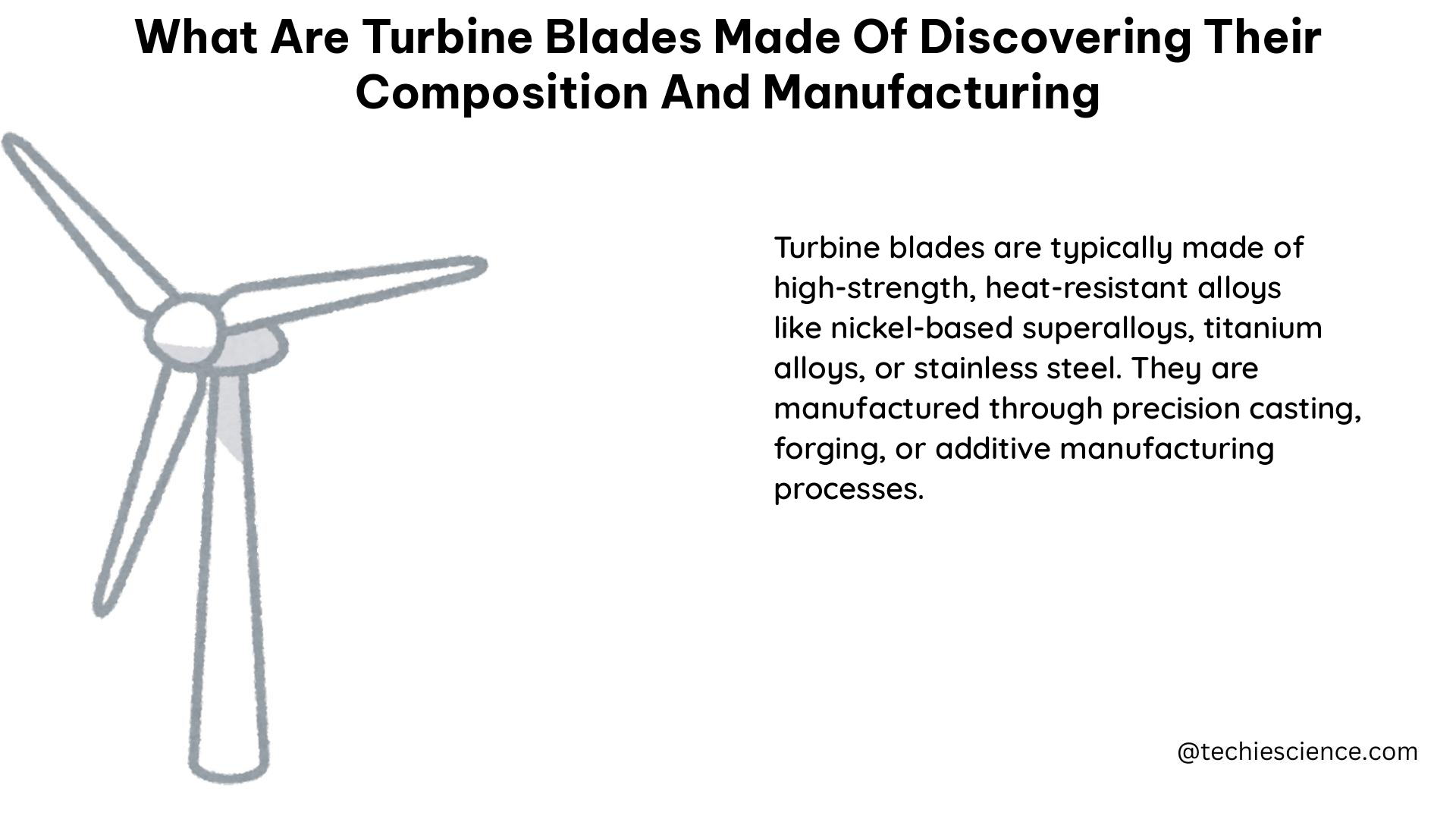Turbine blades are the critical components of wind turbines, responsible for converting the kinetic energy of wind into electrical energy. Understanding the materials and manufacturing processes behind these blades is essential for optimizing wind turbine performance, durability, and sustainability. In this comprehensive guide, we’ll delve into the intricate details of turbine blade composition and manufacturing, providing a wealth of technical information to satisfy the curiosity of DIY enthusiasts and industry professionals alike.
Turbine Blade Materials: Fiberglass and Carbon Fiber
Turbine blades are primarily constructed from composite materials, with fiberglass and carbon fiber being the most widely used options. Each material offers unique advantages and trade-offs, making them suitable for different applications and design requirements.
Fiberglass: The Workhorse of Wind Turbine Blades
Fiberglass is the most common material used in wind turbine blade manufacturing due to its relative affordability, ease of fabrication, and resistance to corrosion and fatigue. Fiberglass blades typically have a strength-to-weight ratio of around 50-70 MPa/(g/cm³), providing a good balance between strength and weight. The flexibility of fiberglass also allows for efficient molding, enabling the creation of complex blade shapes.
However, fiberglass is not without its limitations. The material can be prone to brittleness, degradation over time (aging), and challenges with recycling. Fiberglass blades may also experience reduced performance in high-vibration environments due to their lower stiffness compared to other materials.
Carbon Fiber: Enhancing Strength and Efficiency
Carbon fiber is an increasingly popular choice for wind turbine blades, particularly for larger-scale turbines. Carbon fiber’s superior strength-to-weight ratio, typically ranging from 500-900 MPa/(g/cm³), allows for the creation of longer, thinner blades that can capture more wind energy. Additionally, the higher stiffness of carbon fiber helps reduce noise and vibration while resisting deformation.
The downside of carbon fiber is its higher cost compared to fiberglass, as well as its reduced impact resistance. This trade-off must be carefully considered when selecting the appropriate material for a given wind turbine design.
Turbine Blade Manufacturing: The Infusion Process

The manufacturing process of wind turbine blades significantly impacts their power output, longevity, and overall sustainability. One of the most widely used methods is the infusion process, which offers several advantages over traditional manufacturing techniques.
In the infusion process, a single mold defines the entire blade shape. Dry fiber layers are carefully placed within the mold, and a network of tubes introduces resin under vacuum pressure. The curing process, which involves the application of heat and pressure, bonds the materials together, creating a strong and cohesive blade structure.
The infusion process provides several benefits:
- Reduced Time and Costs: The single-mold design and automated resin introduction streamline the manufacturing process, leading to reduced production times and lower overall costs.
- Decreased Waste: The controlled resin application and curing process minimize material waste, contributing to a more sustainable manufacturing approach.
- Stronger Bonds: The combination of vacuum pressure and heat curing results in stronger bonds within the blade structure, enhancing the overall durability and performance of the turbine.
Turbine Blade Measurement and Accuracy
Turbine blades have complex three-dimensional (3D) shapes, which necessitates the precise measurement of various critical points to ensure optimal performance and longevity. Among the most important measurement points is the diameter of the turbine stages.
Large-scale turbine stages, with diameters exceeding 3 meters (9.8 feet), often require measurement by at least two people due to the sheer size and complexity of the blades. This process can be time-consuming, as the large number of measurement points and the intricate shapes of the blades can make some areas difficult to access or measure accurately.
In such cases, the values calculated from the measurable points are used as the final measured values. The accuracy of these measurements is crucial, as any errors in blade dimensions can lead to eccentric rotor rotation, which can seriously damage bearings and other critical components of the wind turbine.
The durability of turbine blades, which rotate at high speeds under high temperature and pressure, is heavily dependent on the precision of their shapes and dimensions, as well as the materials used in their construction. Accurate blade dimensions are essential for ensuring the proper alignment and smooth operation of the rotor, which in turn affects the overall efficiency and reliability of the wind turbine.
Conclusion
Turbine blades are the heart of wind turbines, and their composition and manufacturing processes are crucial for optimizing the performance, longevity, and sustainability of these renewable energy systems. By understanding the unique properties and trade-offs of fiberglass and carbon fiber, as well as the advanced manufacturing techniques like the infusion process, wind turbine designers and engineers can make informed decisions to create more efficient and durable turbine blades.
Moreover, the precise measurement and accuracy of turbine blade dimensions are critical for ensuring the smooth and reliable operation of wind turbines. By paying close attention to these technical details, the wind energy industry can continue to push the boundaries of innovation and contribute to a more sustainable energy future.
References
- How a Wind Turbine Works – Text Version
- How Wind Turbine Blades are Manufactured
- Measurement and Monitoring of Wind Turbine Blades
- Turbine Blade Measurement Case Study
- Structural Design of Wind Turbine Blades: An Overview

The lambdageeks.com Core SME Team is a group of experienced subject matter experts from diverse scientific and technical fields including Physics, Chemistry, Technology,Electronics & Electrical Engineering, Automotive, Mechanical Engineering. Our team collaborates to create high-quality, well-researched articles on a wide range of science and technology topics for the lambdageeks.com website.
All Our Senior SME are having more than 7 Years of experience in the respective fields . They are either Working Industry Professionals or assocaited With different Universities. Refer Our Authors Page to get to know About our Core SMEs.